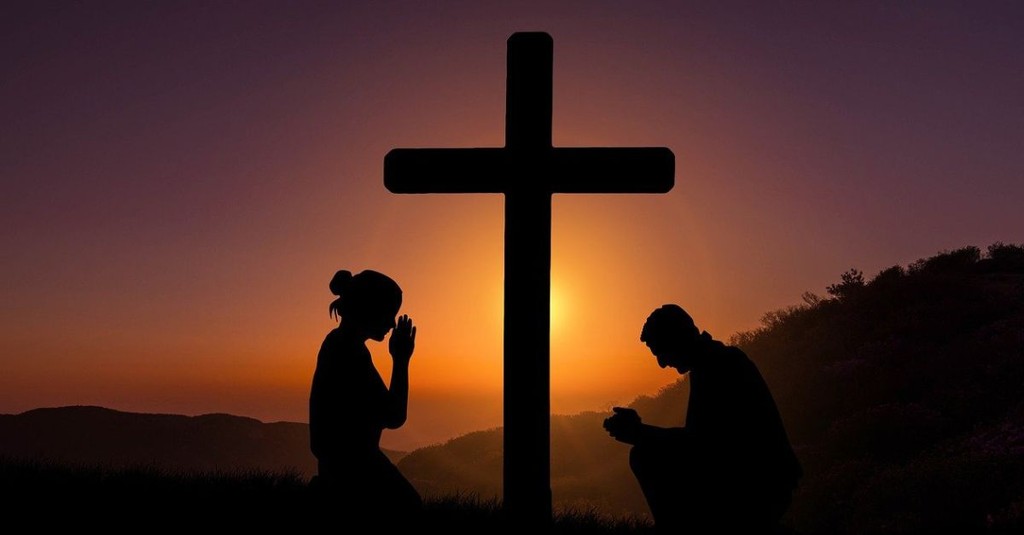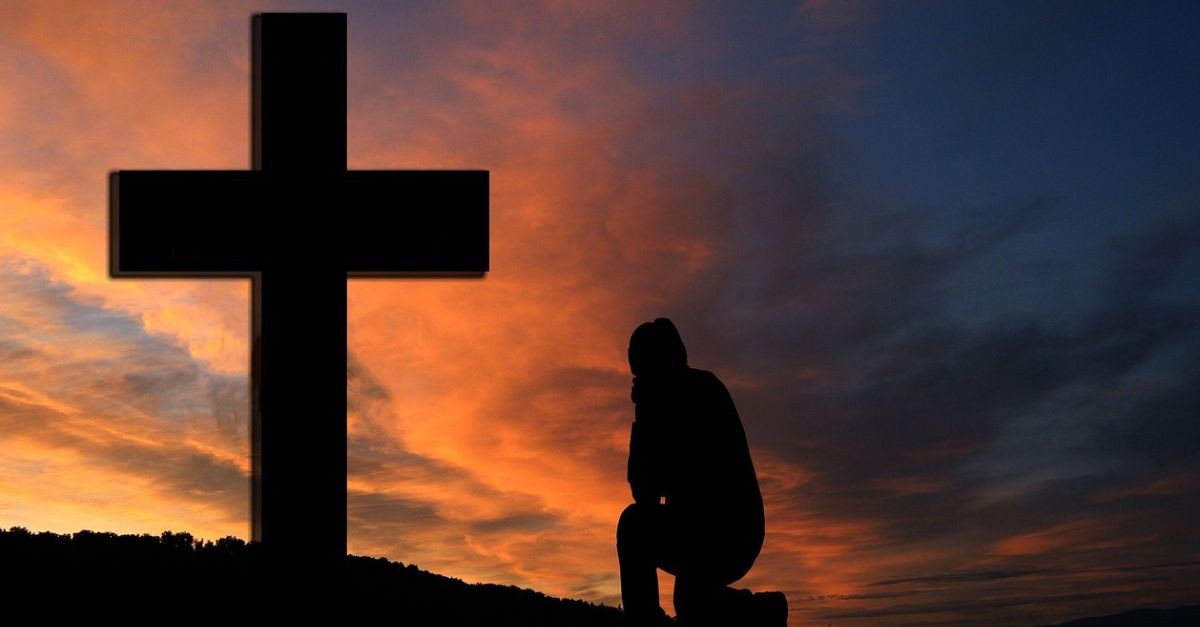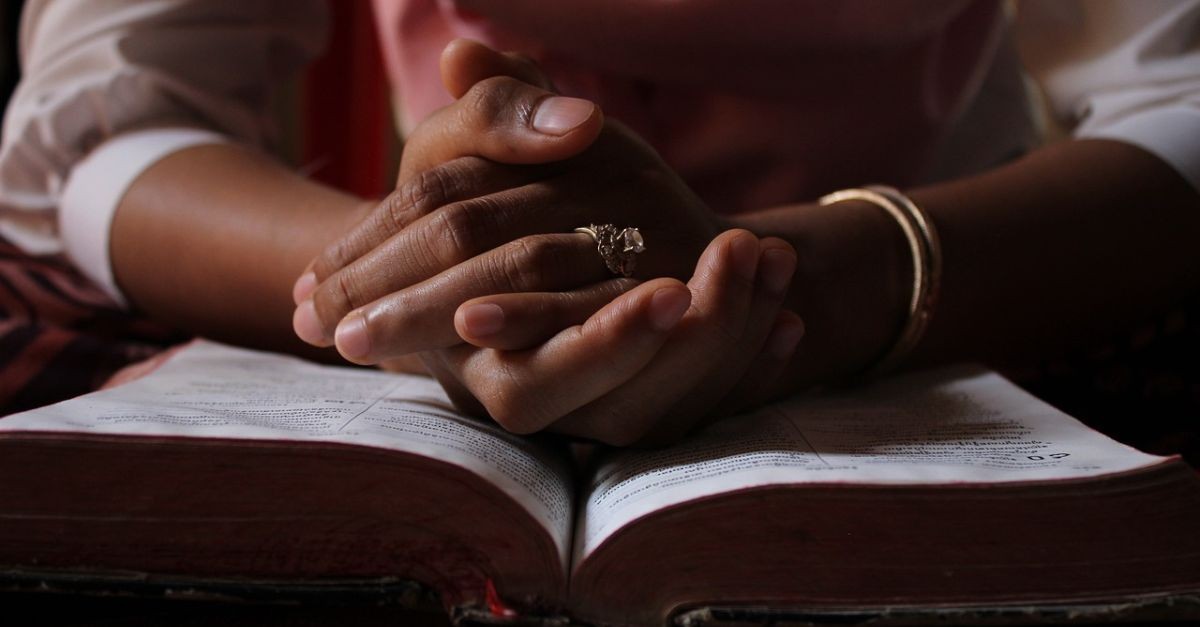
Meditation sometimes gets a bad reputation. Eastern meditation from sources like Buddhism or Hinduism teaches us to empty our minds and become nothing, accepting anything that comes to us as some mystical value.
The Biblical connotation of mediation is different. For Christians, the focus of meditation is upon something specific, like the Person of God, his Word, or a truth held within the Scripture. We focus on this topic or concept in stillness and give God the opportunity to speak to us, guiding our thoughts.
Scripture encourages us to meditate. Joshua 1:8 says:
“Keep this Book of the Law always on your lips; meditate on it day and night so that you may be careful to do everything written in it. Then you will be prosperous and successful.”
And Psalm 1:2-3 instructs:
“But whose delight is in the law of the Lord, and who meditates on his law day and night. That person is like a tree planted by streams of water, which yields its fruit in season and whose leaf does not wither—whatever they do prospers.” - Psalm 1:2-3
Meditation is a central discipline for us to grow in the knowledge of God. For the upcoming Easter season, what should we focus on? Here are seven meditations to prepare for Easter.
Photo Credit: ©Pixabay/geralt

1. Resurrection Hope
Easter serves as a powerful reminder of the resurrection hope we hold dear. This meditation focuses on the profound assurance we find in the resurrection of Jesus Christ from the dead, drawing strength and comfort from the promise of new life and eternal salvation.
"The Hope of Eternal Life
All praise to God, the Father of our Lord Jesus Christ. It is by his great mercy that we have been born again because God raised Jesus Christ from the dead. Now we live with great expectation, and we have a priceless inheritance—an inheritance that is kept in heaven for you, pure and undefiled, beyond the reach of change and decay." - 1 Peter 1:3-4 NLT
Scripture abounds with references to resurrection hope. 1 Peter 1:3-4 reminds us of the living hope we have through the resurrection of Jesus Christ from the dead, an inheritance that is imperishable, undefiled, and unfading. This passage underscores the enduring nature of the hope that Easter brings, transcending the temporal challenges and uncertainties of life.
Moreover, Paul emphasizes the centrality of the resurrection to the Christian faith in 1 Corinthians 15:20-22, proclaiming Christ has indeed been raised from the dead, the first fruits of those who have fallen asleep. This declaration affirms the victory of Jesus over death and the promise of resurrection for all who are in him.
"But in fact, Christ has been raised from the dead. He is the first of a great harvest of all who have died.
So you see, just as death came into the world through a man, now the resurrection from the dead has begun through another man. 22 Just as everyone dies because we all belong to Adam, everyone who belongs to Christ will be given new life." - 1 Corinthians 15:20-22 NLT
As we meditate on the resurrection hope this Easter, we are invited to reflect on the transformative power of Christ’s victory over sin and death. Romans 6:4 encourages us to walk in the newness of life, having been buried with Christ in baptism and raised to walk in the resurrection power of his life. This imagery symbolizes the spiritual rebirth and renewal we experience through our union with Christ.
Photo Credit: ©Pixabay/brenkee

2. Victory Over Death
As Easter approaches, we reflect on the profound significance of Christ’s victory over death. This meditation centers on the triumph of life over death, drawing strength and encouragement from the assurance of resurrection and eternal life found in Jesus Christ.
Death entered the world through the disobedience and sin of Adam and Eve. God’s perfect design for all of Creation, including the special role and position of humanity to multiply and be the representatives of God on earth. The consequence of sin was death, spiritual and physical, placing the whole of Creation under the slavery of entropy and death. To restore all of Creation back to his design and purpose, God needed to destroy death itself, which he did through Christ. Scripture resounds with declarations of victory over death, epitomized in the resurrection of Jesus Christ. 1 Corinthians 15:54-57 exclaims,
“Death has been swallowed up in victory. Where, O death, is your victory? Where, O death, is your sting?”
Christ’s resurrection nullifies the grip of death and grants us the assurance of eternal life. Christ himself is the resurrection and life (John 11:25-26). Let’s meditate this Easter on Christ’s victory over death and how we enjoy this triumph through our intimate relationship with him.
“And if the Spirit of him who raised Jesus from the dead is living in you, he who raised Christ from the dead will also give life to your mortal bodies because of his Spirit who lives in you.” - Romans 8:11
Photo Credit: ©Pixabay/Renan_Brun

3. A New Creation
Amidst the Easter celebration, we contemplate the profound concept of being made new in Christ. Our nature had been corrupted by the Fall, and our sinful nature couldn’t follow God in redemption. The current flesh and blood couldn’t inherit the Kingdom, so God transformed our spirits and bodies through the death and resurrection of Jesus. In 2 Corinthians 5:17, the Apostle Paul declares,
“Therefore, if anyone is in Christ, the new creation has come: The old has gone, the new is here!”
This passage encapsulates the essence of Easter—the ushering in of a new reality through the resurrection of Jesus Christ. Moreover, Revelation 21:5 offers a vision of the future fulfillment of new creation, where God declares,
“I am making everything new!”
This speaks to the ultimate restoration and renewal of all things in Christ, where sin and death are vanquished, and God’s kingdom reigns supreme. As we meditate on the theme of new creation this Easter, we’re invited to reflect on the personal implications of Christ’s resurrection for our own lives. Ephesians 4:22-24 encourages believers to “put off” the old self and to “put on” the new self, created to be like God in true righteousness and holiness. This underscores the ongoing process of spiritual transformation that believers experience as they grow in their relationship with Christ.
Photo Credit: ©Pixabay/reenablack

4. Forgiveness and Redemption
During Easter, Christians reflect on the profound themes of forgiveness and redemption made possible through the sacrificial death and resurrection of Jesus Christ. All have sinned, and our sin has consequences—namely, death. For us to be redeemed, God instituted a way for us to be forgiven of our debts to him through repentance to Christ.
Scripture offers abundant references to forgiveness and redemption as central aspects of God's plan of salvation. Ephesians 1:7 declares,
"In him, we have redemption through his blood, the forgiveness of sins, in accordance with the riches of God’s grace."
This passage emphasizes the inseparable connection between redemption and forgiveness, highlighting the price paid by Jesus' blood for the forgiveness of sins. Moreover, Colossians 1:13-14 proclaims,
"For he has rescued us from the dominion of darkness and brought us into the kingdom of the Son he loves, in whom we have redemption, the forgiveness of sins."
This passage underscores the transformative nature of redemption, which liberates believers from bondage to sin and ushers them into the kingdom of God's beloved Son. As believers meditate on forgiveness and redemption this Easter, they are invited to reflect on the personal implications of Christ's sacrifice for their own lives. Psalm 103:12 declares,
"As far as the east is from the west, so far has he removed our transgressions from us."
This imagery of God's infinite forgiveness emphasizes the depth of His love and the completeness of His redemption.
Photo Credit: ©Pixabay/geralt

5. The Road to Emmaus
In Luke 24:13-35, two disciples, disillusioned and grieving over Jesus’ crucifixion, encounter a stranger on the road to Emmaus. Unbeknownst to them, the stranger is Jesus himself, but their eyes are kept from recognizing Him. As they walk, Jesus explains to them the Scriptures, revealing how the Messiah had to suffer before entering His glory.
This passage reminds us to recognize Jesus in the midst of our doubts, disappointments, and daily routines. Just as the disciples’ hearts burned within them as Jesus opened the Scriptures to them (Luke 24:32), we are invited to seek Jesus in the pages of Scripture and through prayerful reflection, allowing his presence to illuminate our understanding and ignite our hearts with passion for him.
"They said to each other, 'Didn’t our hearts burn within us as he talked with us on the road and explained the Scriptures to us?'" - Luke 24:32 NLT
In addition, this revelation of Christ happened with two, a community, showing us a tangible representation of “where two or more are gathered in my name, there I am in the midst of them.” (Matthew 18:20). Our church community helps us see Jesus clearly. The climax of the story occurs when Jesus reveals himself to the disciples in the breaking of bread, echoing the Last Supper and foreshadowing the sacrament of communion. As Jesus disappears from their sight, the disciples’ eyes are opened, and they recognize Him. This moment of revelation serves as a powerful reminder of Jesus’ presence with His followers, even in the seemingly mundane moments of life.
Photo Credit: ©Pixabay

6. Thomas' Doubt
The story of Thomas’ doubt invites us to confront our doubts in the context of the risen Christ.
In John 20:24-29, Thomas, one of Jesus’ disciples, expresses skepticism when told by the other disciples that Jesus has risen from the dead. He insists on seeing Jesus’ wounds for himself before believing. A week later, Jesus appears to Thomas and invites him to touch His wounds, leading Thomas to declare,
“My Lord and my God!” -John 20:28
Like Thomas, we may struggle with doubt, uncertainty, and skepticism, particularly in the face of extraordinary claims such as the resurrection. Thomas also experienced the threat of persecution and death as the follower of a convicted and executed heretic. However, Jesus’ response to Thomas demonstrates his compassion and understanding, as well as his willingness to meet Thomas in his doubts and provide the evidence he seeks.
“Blessed are those who have not seen and yet have believed” - John 20:29
Jesus’ words to Thomas speak to the faith that transcends physical evidence and rests in the testimony of God’s revelation of himself through the Spirit and the Scripture. This statement offers encouragement to us who, like Thomas, may wrestle with doubt, urging us to trust in the truth of Jesus’ resurrection and the promises of God’s word.
Photo Credit: ©Pixabay/ brittywing

7. The Great Shepherd
The image of Jesus as the Good Shepherd who lays down his life for his sheep provides a poignant meditation for Easter. In John 10:11, Jesus declares,
“I am the good shepherd. The good shepherd lays down his life for the sheep.”
This encapsulates the essence of Jesus' mission on earth—to offer himself as a sacrificial lamb for the redemption and salvation of humanity. He is the Shepherd. We are the sheep. The imagery of the shepherd resonates deeply with us, evoking feelings of gratitude, awe, and humility. It speaks to the depth of Jesus’ love and his willingness to endure suffering and death on behalf of his flock. Moreover, the Good Shepherd motif draws upon rich biblical imagery from the Old Testament, where God is depicted as the Shepherd of Israel who guides, protects, and cares for his people (Psalm 23; Isaiah 40:11). Jesus, as the Good Shepherd, fulfills this prophetic imagery, embodying God's compassion, grace, and provision.
"He will feed his flock like a shepherd.
He will carry the lambs in his arms,
holding them close to his heart.
He will gently lead the mother sheep with their young."
- Isaiah 40:11 NLT
Not only does he give his life for us, but he is the one who leads us with his rod and staff to comfort and protect us (Psalm 23). As we meditate on the Good Shepherd, we are invited to contemplate the significance of Jesus’ sacrifice and his continued guidance in our lives.
Conclusion
In our modern context, it’s difficult to find time to simply be silent and still and meditate. A recent statistic said we check our phones an average of 300 times a day. We can appreciate contemporary tools and technology while also realizing their ability to distract us from what is important. Let’s turn off the television, put away the phones, and focus on the Lord and all he’s done for us this Easter through the death and resurrection of Jesus.
Photo Credit: ©Pixabay/doungtepro

Originally published Friday, 08 March 2024.
